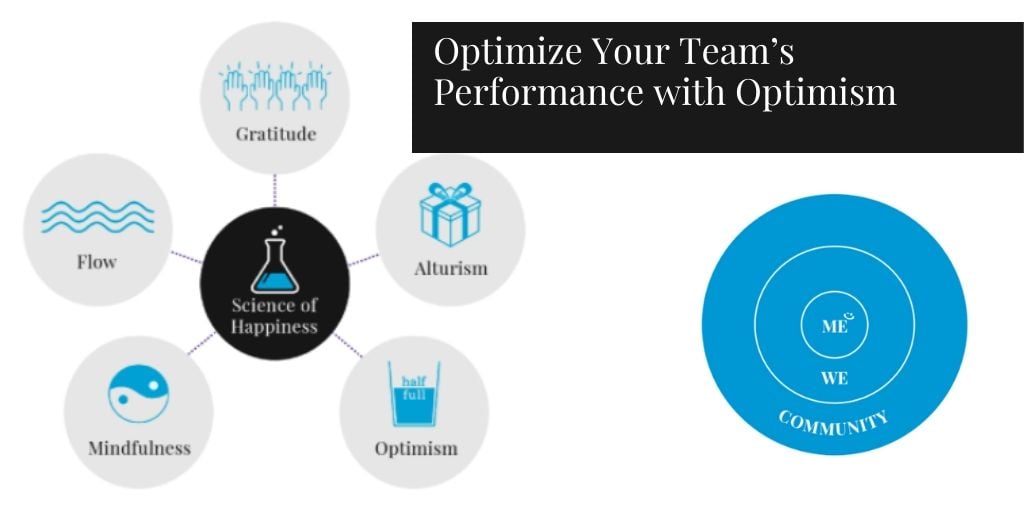
Optimism is not just good for your personal finances, health and relationship, but also an essential skill for a high performing team. That’s right. Optimism is one of the 5 Delivering Happiness habits that can be learned. Optimists are more
engaged at work and perform better over time. Optimism is also contagious that it creates more optimists in the workplace. Optimistic managers embody positive leadership—employing a strengths-based approach, maintaining a positive perspective, and frequently providing recognition and encouragement--increase productivity for team members.
Especially during trying times, having an optimistic team can be the difference between life and death of your organization. Of course, you can hire optimists. But what do you do with the high skilled "not-yet-optimists" that are already on your team?
Since optimism is contagious, YOU have to start modeling optimism as a leader of your group. The optimism and engagement level will quickly ripple out to your team and the greater community.
A common myth is that you are either born an optimist or a pessimist. At Delivering Happiness, we define optimism as the belief that we can make things better. On the contrary, pessimism would be the belief that nothing you do actually matters (so there is no reason to try hard). The optimism we teach at DH is to see the facts and optimize our options to get to the best expected outcome. Positive Psychologist Dr Paul Seligman found that mothers’ explanatory styles of adversities affects how their daughters think. The same goes for managers to their team.
The real question is: How can you learn to use optimism as a tool?
Have more questions on how to apply optimism with your team or how to create a thriving culture? Join us with our all new Group Culture Coaching and future proof your business.

Kelly is the happy growth activator at DH. With her 15+ years of lessons learned in engineering, sustainability, investing, business, education and non-profit, Kelly works with business leaders, especially startup founders, to level up their personal and team performance. She's also a venture investor passionate about creating a better future of work and a sustainable world.